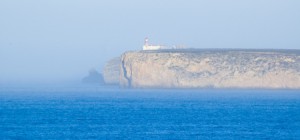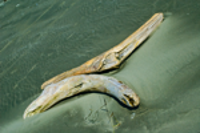A Question of Balance
 We have a lot to thank the ancient Greeks for. They gave us Greek culture, mythology, the Odyssey and the Iliad. They developed drama and many of the arts and sciences and gave us some of the best early approaches to understanding the world – including its cartography. But the Greeks got some things downright wrong, too, like the circumference of the world. Unfortunately the rest of the European world held onto these errors as gospel simply because it WAS the Greeks who initiated the theories.
We have a lot to thank the ancient Greeks for. They gave us Greek culture, mythology, the Odyssey and the Iliad. They developed drama and many of the arts and sciences and gave us some of the best early approaches to understanding the world – including its cartography. But the Greeks got some things downright wrong, too, like the circumference of the world. Unfortunately the rest of the European world held onto these errors as gospel simply because it WAS the Greeks who initiated the theories.
Case in point was the Greek philosophers’ belief in symmetry which, in cartography, surmised that because there was a large landmass in the northern hemisphere (Europe and Asia and North Africa), there must be a similar large land mass in the south. This led to world maps carrying the weight of a large continent south of the equator. In earlier maps this continent encircled the Indian Ocean, but when Vasco da Gama sailed the Cape ofGood Hope to circumnavigate Africa, the great continent receded a little, and simply reached out from the limits of Antarctica. It became known as Terra Australis.
 The myth of the Antipodean continent caused cartographers to override the information brave explorers brought back from their ventures. When Magellan made the dangerous crossing from Atlantic to Pacific off the tip of South America, they spotted Tierra del Fuego and surmised it was an island. Cartographers, however, chose to override those who had been there, and drew Tierra del Fuego as an outcropping of the great continent. More mapmakers embellished their maps with prominent features like the land of Parrots, the Cape of Good Signal and the River of Islands, all lending credence to the existence on the continent. But exploration in the Pacific continued to chip away at the continent’s size, but it was only in the 1770s, when Captain James Cook was instructed to search for the southern continent, that he sailed farther south than 71 degrees to a land of fog and snow mists, that cartographer’s gave up on their belief in the super-sized southern continent.
The myth of the Antipodean continent caused cartographers to override the information brave explorers brought back from their ventures. When Magellan made the dangerous crossing from Atlantic to Pacific off the tip of South America, they spotted Tierra del Fuego and surmised it was an island. Cartographers, however, chose to override those who had been there, and drew Tierra del Fuego as an outcropping of the great continent. More mapmakers embellished their maps with prominent features like the land of Parrots, the Cape of Good Signal and the River of Islands, all lending credence to the existence on the continent. But exploration in the Pacific continued to chip away at the continent’s size, but it was only in the 1770s, when Captain James Cook was instructed to search for the southern continent, that he sailed farther south than 71 degrees to a land of fog and snow mists, that cartographer’s gave up on their belief in the super-sized southern continent.
So they turned their notion of symmetry northward.
If South America and Africa both had southern straights that gave passage from one ocean to another, then surely there must be something similar in the north. This led to the search for the Northwest Passage that scattered the names of many an explorer across Canada’s north. Think Frobisher Bay. Think Baffin Island and Hudson Bay, just to name a few.
Explorers from Spain, France and England sent explorers up and down the coast of North America and deep inland through the great lakes, seeking that passage. The English sent exploration teams one after another into Canada’s north, many never to be heard from again.

When the search from east to west brought no results, they sent famed Captain Cook, and then Captain Vancouver, exploring and mapping the Pacific coast of North America still seeking that elusive fjord that would spread out and become a fulsome channel all the way to England.
It was not to be, but such legends died hard. And today perhaps the ancient Greeks are laughing, as global warming opens up the northern passage they prophesized. Symmetry exists at last.









